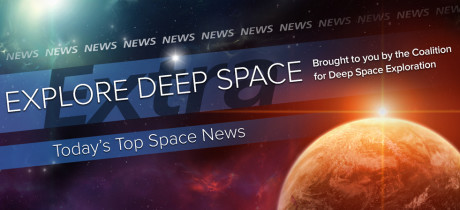In Today’s Deep Space Extra… Lockheed Martin shows off its concept for a crew living quarters on a spacecraft developed to explore beyond lunar orbit. NASA, Aerojet Rocketdyne confirm good results from an abbreviated test firing of the RS-25 rocket engine this week that is to power the Space Launch System (SLS) first stage. U.S. Senate confirmation hearings for White House nominees to become NASA deputy administrator and White House science and technology advisor are set for next week.
Human Space Flight
Lockheed Martin gives first look into where astronauts may live on missions to deep space
Coalition Member in the News – Lockheed Martin
Orlando Sentinel (8/16): Lockheed Martin is among a half dozen companies under contract to NASA to develop prototypes for a four person “RV” concept to serve as a habitat for U.S. space explorers who depart NASA’s planned human tended, Lunar Gateway for destinations deeper into space. Lockheed uses the Donatello Multi-Purpose Logistics Module, which dates to the shuttle era for the launching of supplies to the International Space Station (ISS) during the assembly years. NASA could select a design a concept by the end this year.
NASA says RS-25 engine test a success despite ending early
Coalition Member in the News – Aerojet Rocketdyne
SpaceNews.com (8/16): NASA and contractor Aerojet Rocketdyne explained Tuesday’s first test firing of the RS-25 rocket engine that is to power future versions of the Space Launch System’s (SLS) first stage went successfully, although it was cut short by a facility issue at the Stennis Space Center. Eight more test firings are planned for the space shuttle era engine what has been upgraded with a new engine controller and components produced with new techniques like 3-D manufacturing. The test, slated to run 8 minutes, 20 seconds, was interrupted at 5 minutes, 19 seconds. NASA Administrator Jim Bridenstine was among those at Stennis for the test.
Senate Commerce Committee to consider Morhard, Droegemeir nominations next week
Spacepolicyonline.com (8/16): The U.S. Senate Commerce, Science and Transportation Committee has set an August 23 hearing to consider the White House nominations of James Morhard to become NASA deputy assistant administrator and Kelvin Droegemeir to become the White House Office of Science and Technology Policy.
Space Science
Six things about Opportunity’s recovery efforts
NASA/Jet Propulsion Laboratory (JPL) (8/16): Scientists and missions’ managers are continuing with efforts to reestablish contact with NASA’s Opportunity rover, which landed on Mars in January 2004 to explore well beyond what was to be a 90 day mission. The dust from a global dust storm disabled the solar powered rover’s operations on June 10. The storm is subsiding, but dust continues to fall onto the solar panels. Opportunity’s solar charged batteries were in good shape at the time of the communications loss, and a recovery could be much like a patient recovering from a coma, slow. JPL is offering the space community a way to share thoughts.
China’s mission to the far side of the Moon will launch in December
Planetary.org (8/16): China is all set to attempt the first ever soft-landing on the far side of the Moon, announcing on Wednesday that it will launch the Chang’e-4 lunar lander and rover spacecraft in December. The Chang’e-4 spacecraft has completed payload integration and space environment testing. It will launch in December atop a Long March 3B rocket from the Xichang Satellite Launch Center, in the southwest part of the country—the same site used for China’s five previous lunar-related missions. Chang’e-4 will target the South Pole-Aitken (SPA) basin on the lunar far side. A landing in the SPA basin is one of lunar researchers’ top priorities, because it’s the oldest lunar basin and may contain material on its floor that came from the lunar mantle.
Other News
Proposed standard seeks to offer more launch flexibility for smallsats
SpaceNews.com (8/16): Larger small satellites could earn the more flexible launch regulations reserved for the very smallest smallsats. The Launch Unit standard was unveiled by the Aerospace Corp. on August 6 at the Utah State University Small Satellite conference. The proposal would permit a transfer of small satellites between launch vehicles easier and apply to spacecraft weighing 60 to 80 kilograms and measuring 45 by 45 by 60 centimeters in volume.
‘Very abnormal’ Russian satellite doesn’t seem so threatening, experts say
Space.com (8/16): Earlier this week, a high ranking State Department official expressed concern over a Russian satellite launched in October 2017, while speaking at a disarmament conference in Geneva. Further checking suggests the worrisome Cosmos 2523 was actually a secondary payload on the 2017 mission that deployed on October 30, 2017. The primary satellite likely launched in June 2017. Ample maneuvering among all the deployments and a possible re-docking have raised concerns over anti-satellite weapon development. But two experts in the field question whether the observations point to a real concern.

